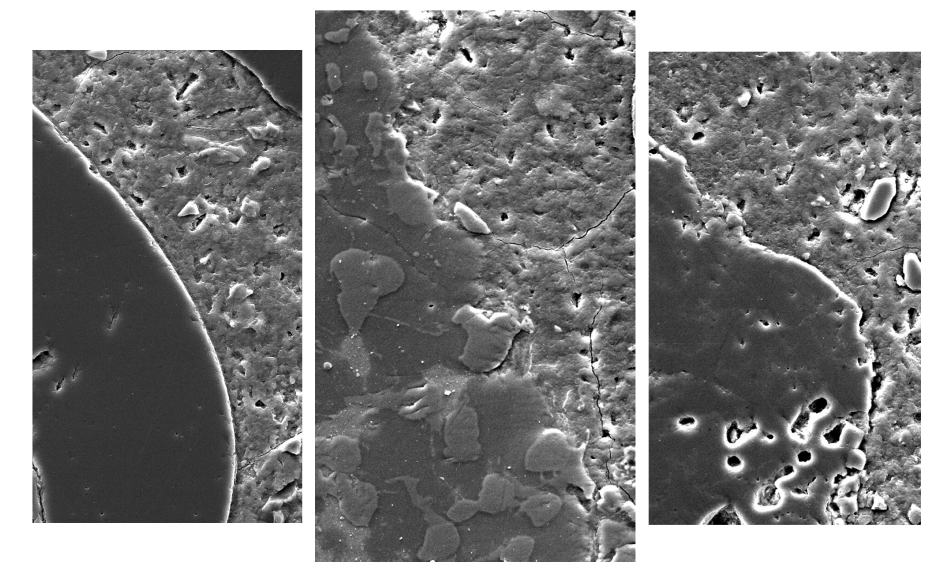Apr 7 2020
Scientists have demonstrated a way to use a by-product of steel making in both making stronger concrete and treating wastewater, through a zero-waste method to help promote the circular economy.
 Magnified images showing concrete made with treated slag (center), conventional aggregates (left) and raw slag (right). The treated slag forms a more seamless bond with the cement paste, making the concrete stronger. Image Credit: RMIT University.
Magnified images showing concrete made with treated slag (center), conventional aggregates (left) and raw slag (right). The treated slag forms a more seamless bond with the cement paste, making the concrete stronger. Image Credit: RMIT University.
Steel slag is produced during the segregation of molten steel from impurities, and it is largely utilized as an alternative aggregate material for concrete making.
Additionally, steel slag can be utilized to absorb contaminants such as iron, magnesium, calcium, phosphate, aluminum, and silica in the wastewater treatment procedure. However, it loses its effectiveness as time passes.
At RMIT University, engineering researchers analyzed whether the slag used to treat wastewater could subsequently be recycled as an aggregate material for concrete.
The concrete produced using post-treatment steel slag was about 8% stronger than raw steel slag and 17% stronger compared to concrete made using traditional aggregates.
According to Dr Biplob Pramanik, a water engineer, the study was the first to examine prospective applications of “sewage-enhanced” slag in construction material.
The global steel making industry produces over 130 million tons of steel slag every year. A lot of this by-product already goes into concrete, but we’re missing the opportunity to wring out the full benefits of this material.
Dr Biplob Pramanik, Water Engineer, RMIT University
Pramanik added, “Making stronger concrete could be as simple as enhancing the steel slag by first using it to treat our wastewater. While there are technical challenges to overcome, we hope this research moves us one step closer to the ultimate goal of an integrated, no-waste approach to all our raw materials and by-products.”
Through the research, water and civil engineering researchers discovered that chemical properties of the slag are improved by the wastewater treatment, thus it exhibited better performance when used in concrete.
The things that we want to remove from water are actually beneficial when it comes to concrete, so it’s a perfect match.
Dr Biplob Pramanik, Water Engineer, RMIT University
According to Dr Rajeev Roychand, a civil engineer, the study was promising initially but additional research was required to implement the method at a wider scale, such as examining the long-term durability and mechanical properties of optimized slag.
Steel slag is currently not in widespread use in the wastewater treatment industry–just one plant based in New Zealand uses this by-product in its treatment approach. But there is great potential here for three industries to work together–steel making, wastewater treatment and construction–and reap the maximum benefits of this by-product.
Dr Rajeev Roychand, Civil Engineer, RMIT University
The study titled “Recycling steel slag from municipal wastewater treatment plants into concrete applications—A step towards circular economy,” which involved RMIT School of Engineering co-authors Professor Sujeeva Setunge and Professor Kevin Zhang, was published in the journal Resources, Conservation and Recycling.